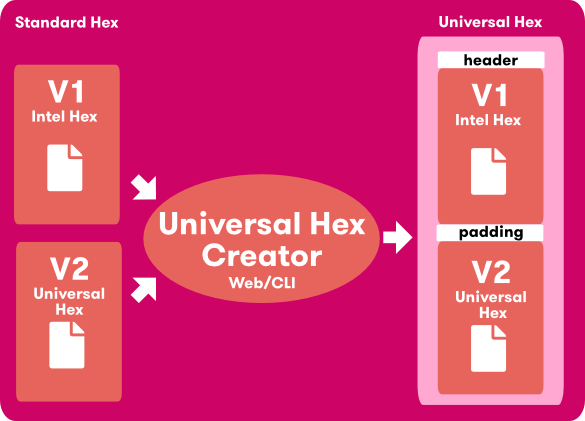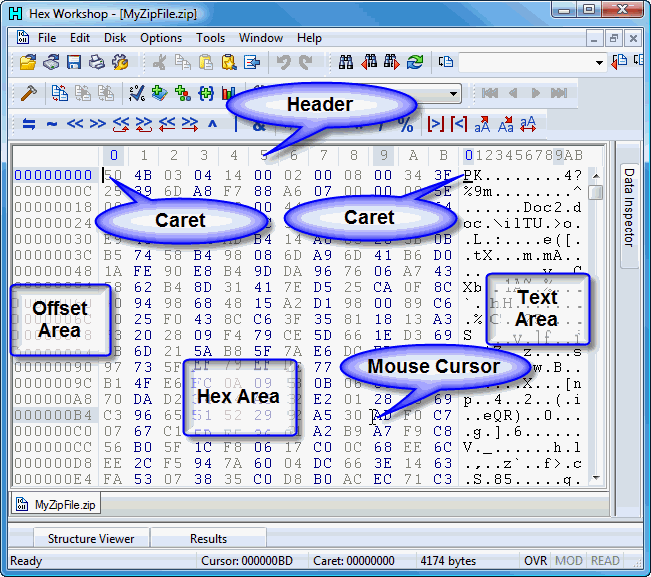

Another useful feature is finding and replacing functions and converting between binary, octal, decimal, and hexadecimal values. It has a multilevel undo and redo mechanism that some may find useful. Ghex is a graphical hex editor that lets users edit a binary file in both hex and ASCII format.

The installation of this hex viewer is different for different operating systems, so it is recommended to check the readme file in the project to see the exact installation instructions for your OS. (Note that there is a splitting line in between)

Hex column, which contains the hexadecimal view of the file.Offset column to tell you how many bytes into the file you are.The view of hexyl is split into three columns: Hexyl Hex EditorĪnother useful tool for examining binary file is hexyl, is a simple hex viewer for Linux terminal that uses a colored output to determine different categories of bytes. Hexedit shows both the hexadecimal and ASCII view of the file at the same time. Hexedit is another hexadecimal command-line editor that might already be preinstalled on your OS. It can also convert a hex dump back to its original binary form. One of those tools is the command-line tool – xxd, which is most commonly used to make a hex dump of a given file or standard input. Most (if not every) Linux distributions come with an editor that allows you to perform hexadecimal and binary manipulation.
HEX OFFSETS WXHEXEDITOR DOWNLOAD
If no package available, head over to the website of each tool where you will get the standalone package for download and installation procedures, along with details on dependencies.
HEX OFFSETS WXHEXEDITOR INSTALL
Most of these mentioned hex editors are available to install from the default repository using your distribution’s package manager, like so: # yum install package Of course, there are many other things you can use hex editors – for example reviewing files with the unknown file format, performs hex comparison, reviewing program memory dump, and others.

Some of the most commonly used cases are debugging or reverse engineering binary communication protocols. Hex editors are used for editing individual bytes of data and are mostly used by programmers or system administrators. The difference between a regular text editor and the hex editor is that the regular editor represents the logical content of the file, while a hex editor represents the physical contents of the file. In simple words, a hex editor allows you to examine and edit binary files. But before we start, let’s look at what a hex editor really is. Moreover, you can easily keep it on a removable storage unit for more flexibility in your work.In this article, we are going to review some of the best hex editors for Linux. It's at the beginning of development, already offering various editing options. Taking everything into consideration, we can say that wxHe圎ditor is an incredibly easy to use and practical application of its kind. Since it is a delicate task, included features let you create a backup, restore settings or even completely erase data on a drive. Entire disk drives can be loaded to view and modify hex data. Keep your data safe with backupsįurthermore, you can run a comparison tool with customizable options, in order to analyze differences. This can be handled by setting the file mode to read only, writeable or direct write, which applies changes as you make them. It is possible to simultaneously work on more projects, each opening up in a separate tab, this making it possible to add more files at a time.īy default, the application restricts you from editing any details so that you don't accidentally damage a file, even though you can undo your actions. Handle file writing optionsĪdding a file can easily be done with the help of the dedicated file menu entry or simply dragging them over the main window. What's more, you can easily keep it on a removable disk drive since it does not require installation. System resources is not something to worry about, being available on multiple configurations.
HEX OFFSETS WXHEXEDITOR CODE
The interface is incredibly well-organized, with a main workspace that displays offset lines with corresponding code and interpretation, as well as fully customizable side panel elements. Applications such as wxHe圎ditor give you the possibility to modify hexadecimal values within any file, as long as you know what you're doing. For the basic options, like modifying the internal structure of a file, a great deal of knowledge is also required. The amount of available applications and diversity make it possible to create and edit nearly anything in the virtual space.


 0 kommentar(er)
0 kommentar(er)
